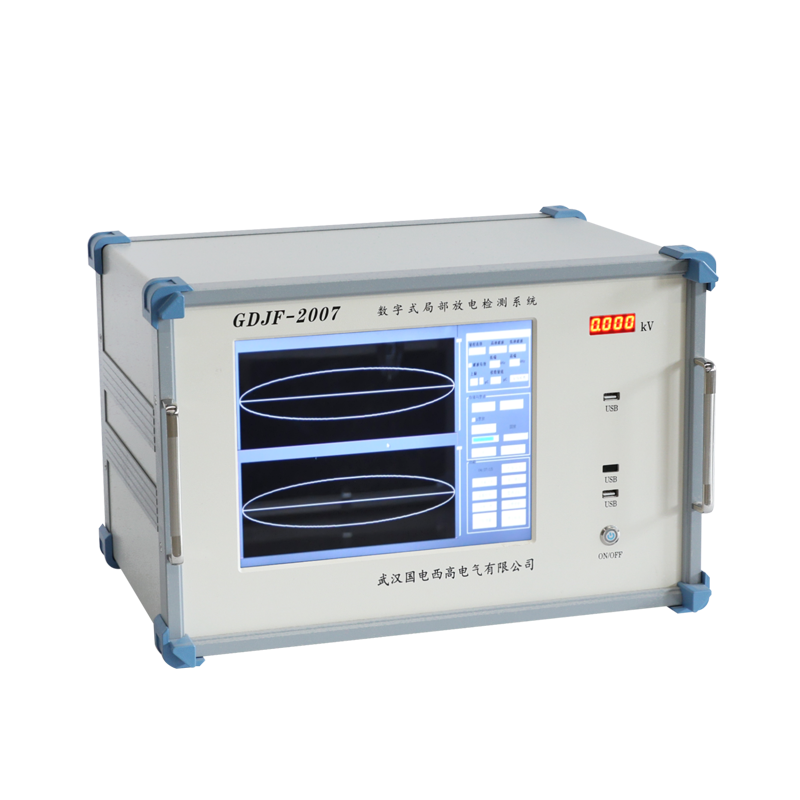During the operation of power equipment, when partial discharge occurs, various charged particles such as electrons, positive and negative ions, stimulated by the electric field, generally have more energy than the bond energy of the polymer. These charged particles strike the walls of the dielectric air gap, breaking the insulator’s stable chemical bonds. At the same time, the dielectric heating at the partial discharge point will generate extremely high temperatures, which will cause thermal cracking of the insulator or promote oxidative cracking, thereby destroying the molecular structure of the insulator.
The high-voltage switch cabinet is a combined electrical device composed of epoxy resin, sulfur hexafluoride, engineering plastics and other materials. There are many reasons for partial discharge. The common ones are as follows:

GDJF-2007 digital partial discharge Tester
(1) Defects in the manufacturing process of insulation materials.
Due to the influence of various factors such as insulation structure and technology, there may be residual bubbles or impurities in the insulator. The dielectric constant of gas is often smaller than that of liquid or solid materials. Under an alternating electric field, the distribution of electric field intensity is inversely proportional to the dielectric constant. Therefore, if there are bubbles in a liquid or solid medium, the electric field strength within the bubble is higher than that of the surrounding medium, but the breakdown electric field strength is much lower than that of the liquid or solid. In this way, the bubbles are first decomposed and discharged, while the other dielectric remains insulated, forming a typical partial discharge.
(2) The electric field distribution is uneven.
Burrs or sharp corners on the conductor surface will concentrate the electric field, causing partial discharge. However, metal particles can be introduced into the manufacture and assembly of switchgear. These particles in the cabinet have a strong ability to accumulate charges, causing electric field distortion and discharge in the area; if the surface of the switch cabinet insulator is too dusty or not smooth enough, it will cause insufficient creepage distance, leading to partial discharge; even in a grounded shell On the other hand, if the weld is rough, there are pores or slag inclusions on the surface, and the electric field distribution is uneven, partial discharge will also occur.
(3) The dielectric is uneven.
With the development of insulation technology, high-voltage metal-enclosed switchgear with atmospheric insulation and composite insulation are the most widely used products. However, it is the use of composite insulation technology that leads to differences in the dielectric properties of various parts of the insulation material. Bubbles and impurities introduced during the manufacturing process of insulation materials further make the medium distribution uneven, resulting in discharge in a high-voltage environment.
In addition, busbar burrs, voltage, temperature, humidity, insulation conditions and external environment will all affect partial discharge.
Post time: May-11-2024
